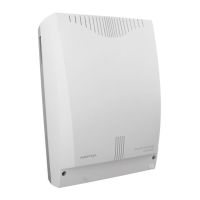Ascotel IntelliGate 2025/2045/2065
178 Identification Elements Part 2
3 Identification Elements
In keeping with the system's networking philosophy, it is essential for calls to be
correctly identified and displayed. Many settings therefore serve the purpose of
correct call identification.
A call is identified firstly by the type of acoustic ringing (i.e. ringing pattern) and,
secondly, by the display on the terminal.
The initialization values are selected in such a way that the ringing patterns and
displays appear correctly in most cases. Changes to the settings are necessary only
in exceptional cases.
3.1 Internal and External Ringing Patterns
The ringing pattern provides a means of identifying whether the call originates
from within the PBX (internal call) or from the outside (external call). The rhythm
of the ringing pattern differs in each case
Fig. 2.7: Internal ringing pattern
1)
Fig. 2.8: External ringing pattern
1)
Calls with the "Internal" Ringing Pattern.
• Calls from internal subscribers
• Calls from the public network if "Ringing pattern = single ringing tone" is set
in the subscriber configuration.
This setting is recommended if the subscriber is a terminal (not a system termi-
nal) that automatically answers a call (e.g. a fax machine) as not all devices are
capable of correctly interpreting the external ringing pattern.
1)
In some countries the internal and external ringing patterns may be used in precisely the opposite way.
Time
Single ringing tone
haz0679aaena0
Time
Double ringing tone
haz0680aaena0

